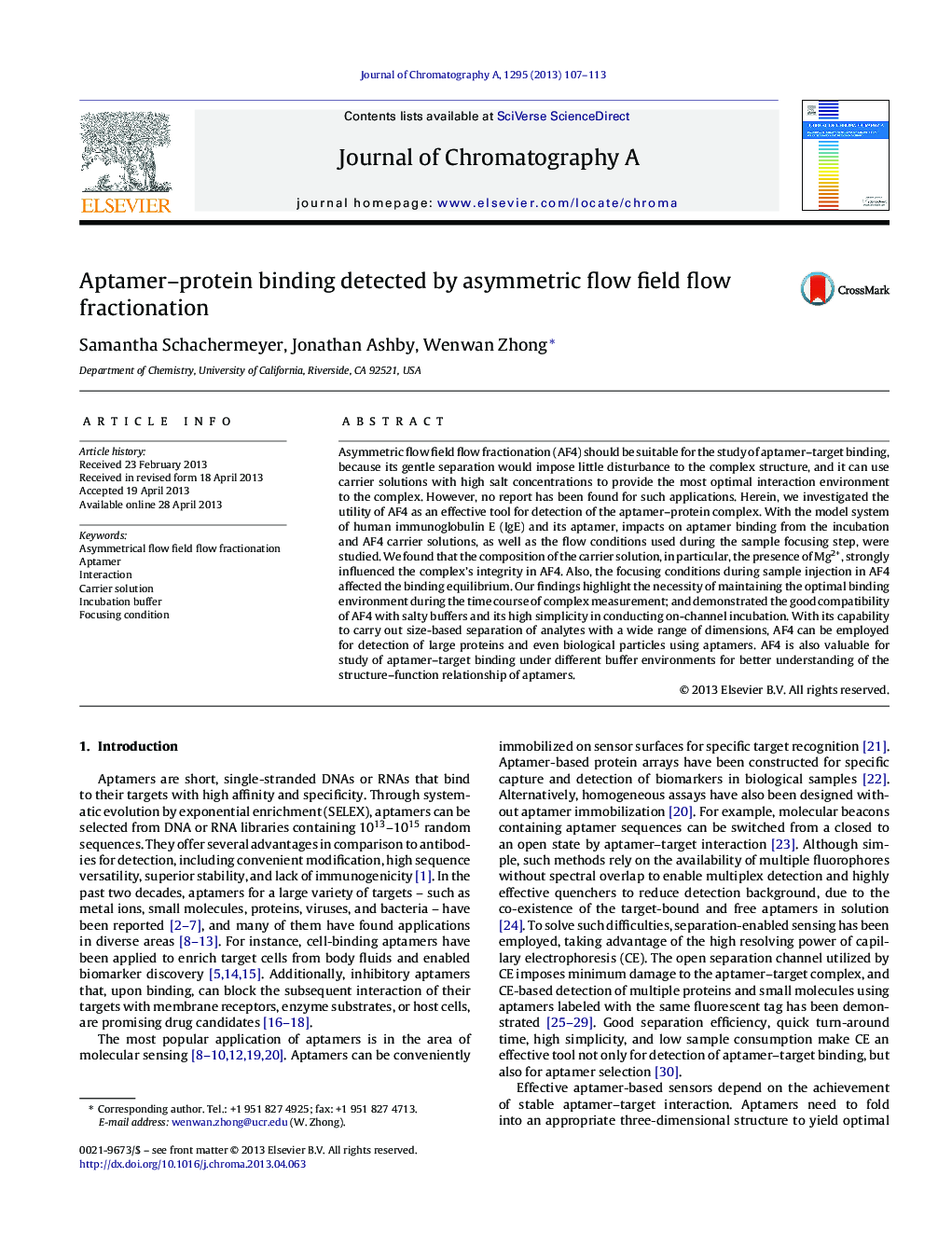| Article ID | Journal | Published Year | Pages | File Type |
|---|---|---|---|---|
| 1201646 | Journal of Chromatography A | 2013 | 7 Pages |
•AF4 is useful for study of aptamer–protein binding.•Aptamer binding in AF4 is affected by incubation buffer and carrier solution.•Carrier solution is more critical to maintain binding than incubation buffer.•Using the focusing step for on-line incubation enhances binding efficiency.
Asymmetric flow field flow fractionation (AF4) should be suitable for the study of aptamer–target binding, because its gentle separation would impose little disturbance to the complex structure, and it can use carrier solutions with high salt concentrations to provide the most optimal interaction environment to the complex. However, no report has been found for such applications. Herein, we investigated the utility of AF4 as an effective tool for detection of the aptamer–protein complex. With the model system of human immunoglobulin E (IgE) and its aptamer, impacts on aptamer binding from the incubation and AF4 carrier solutions, as well as the flow conditions used during the sample focusing step, were studied. We found that the composition of the carrier solution, in particular, the presence of Mg2+, strongly influenced the complex's integrity in AF4. Also, the focusing conditions during sample injection in AF4 affected the binding equilibrium. Our findings highlight the necessity of maintaining the optimal binding environment during the time course of complex measurement; and demonstrated the good compatibility of AF4 with salty buffers and its high simplicity in conducting on-channel incubation. With its capability to carry out size-based separation of analytes with a wide range of dimensions, AF4 can be employed for detection of large proteins and even biological particles using aptamers. AF4 is also valuable for study of aptamer–target binding under different buffer environments for better understanding of the structure–function relationship of aptamers.
